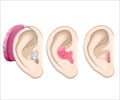Glossary
Demyelinating disease: A condition that results from damage to the myelin sheath (protective covering around the nerve fibers).Auditory pathway: The path of the transmission of the sound signals from the inner ear to the brain. The path consists of cochlea, cochlear nucleus, superior olivary complex, inferior colliculus, medial geniculate nucleus and finally the auditory cortex.
Auditory cortex: Auditory area of the brain that receives signals from the auditory pathways. This is located at the superior gyrus of the temporal lobe of the brain.
Potential: A quantity that determines the charge in an electric field.
Waveforms: A curve that shows the shape of a wave at a given time for a given signal.
Acoustic neuroma: A benign growth that develops on the vestibulocochlear nerve that can cause hearing or balance problems.
Cochlear nerve: The part of the vestibulocochlear nerve (VIIIth cranial nerve) that takes the information of hearing from cochlear to the brainstem.
Cochlear nucleus: The cochlear nerve fibers carry information from the cochlea to the brainstem where they form the nucleus.
Superior olivary complex: A collection of brainstem nuclei of the ascending and descending auditory pathways.
Lateral lemniscus: The tract of axons (the tail part of the nerves) of the auditory nerve, located in the brainstem that carries information of the sound from cochlear nucleus to the brainstem nuclei and to the inferior colliculus of the midbrain.
Inferior colliculus: Nucleus of the auditory pathway that is located in the midbrain and receives messages from brainstem nuclei of the auditory pathway and auditory cortex.
Bilirubin: Pigment formed from the breakdown of red blood cells.










